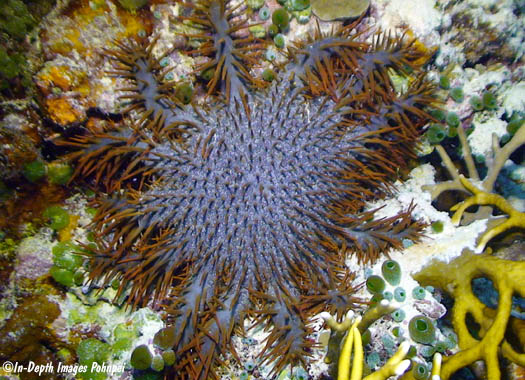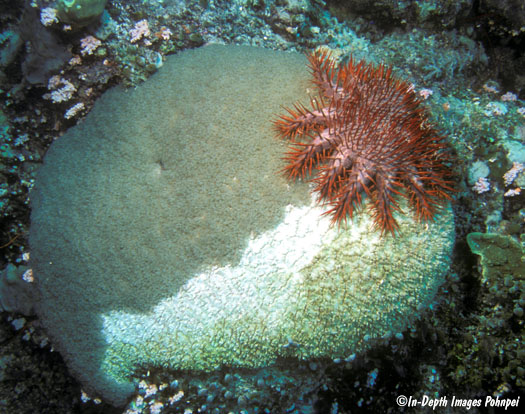
Acanthaster solaris is the large, well-known Pacific crown-of-thorns starfish. It was long accepted that the crown-of-thorns found throughout the Indo-Pacific and eastern Pacific were all A. planci but recent genetic and morphological studies indicate there are different species. The Pacific version is often referred to as A. cf solaris since it is thought to need more taxonomic attention. Acanthaster solaris eats living coral, feeding by crawling over its prey, opening its mouth wide and extruding its stomach over the coral. The coral tissue is digested in place and sucked into the star, leaving a completely white and empty coral skeleton that quickly gets covered by algae. Occasionally these stars overpopulate certain areas, forming large herds that devour much of the coral on a reef. Causes for these population blooms are still debated, but at times teams of divers have attempted to prune down the Acanthaster populations on some reefs, either by removing them from the water or injecting them with some poison that kills the entire animal. Like most seastars, just chopping them up will not help since starfish can regenerate from pieces. It has been questioned by some whether such pruning attempts do good or harm. In any case, these should not be handled unless you know what you are doing. The spines covering these stars are pointed and sharp, easily puncturing a diver's skin and delivering a venom that causes relatively intense pain. The venom also appears to have anticoagulant properties, causing puncture wounds from the star to bleed for quite a long time. Acanthaster can reach about half meter in diameter.

The star below is devouring the coral Physiogyra lichtensteini, digesting out the brown living coral tissue and leaving a dead white skeleton.

Created 3 February 2021
Updated 11 February 2024